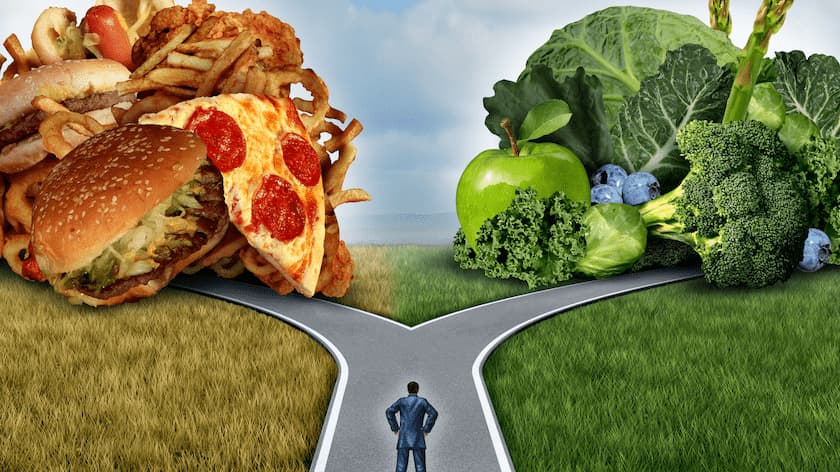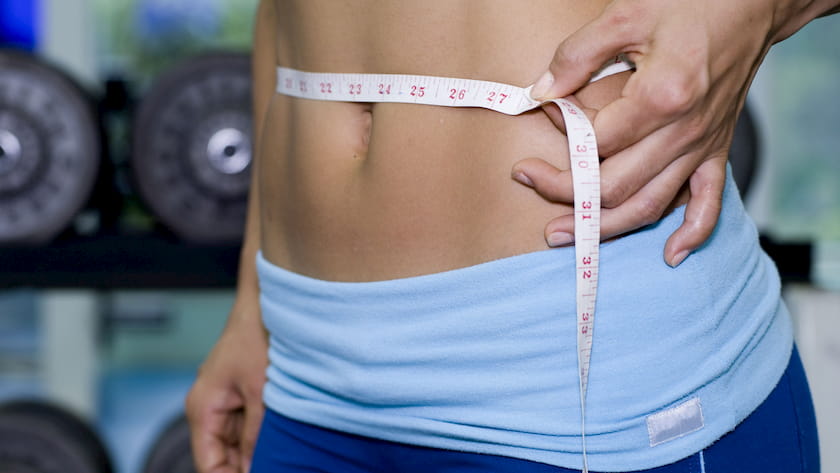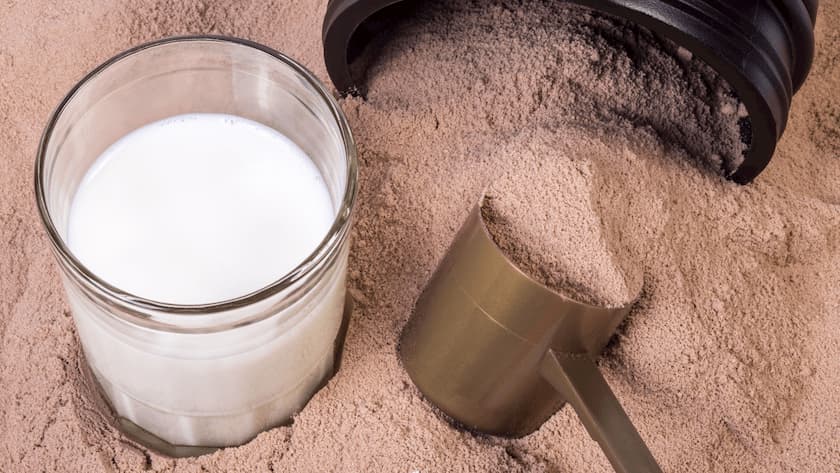Flexible dieting has made quite an impact on health and fitness culture over the last decade, and naturally, it has garnered many advocates and many opposers. The reality is that flexible dieting isn’t really anything special; it’s just a science-based approach to eating. Science, especially nutritional science, doesn’t lend itself to sweeping statements.
This is to say that there is no such thing as an optimal cookie-cutter diet that will suit everyone. Nutrition and dieting is a realm that operates in many shades of gray; it’s not black and white like many pseudoscientists and fitness “experts” make it out to be.
Flexible dieting isn’t a specific meal plan, though. It’s an ideology of how to eat any foods you want and still improve your health and body composition.
But what exactly is flexible dieting? Is it a better approach to dieting than “clean” bodybuilding or fitness diets? And how does one go about implementing a flexible dieting routine? Read on as these are all questions that will be answered in this article!
What is Flexible Dieting?
Surprisingly, when you really consider what flexible dieting is, it isn’t really anything new or profound. In fact, flexible dieting is the exact same way everybody who tracks their food intake has always eaten, with one significant exception: no foods are seen as off limits.
It’s understandable if you had to reread the previous sentence. Most readers that are coming from a background of “bro” dieting are probably thinking, “Wait a minute?! You’re telling me I can eat whatever I want and still meet my health and fitness goals?” To which the answer is a resounding, “Yes!”
In the health and fitness realm, the idea of no foods being off limits seems to agitate diehard “clean” eating advocates; they debase flexible dieting and claim it is an illogical way of dieting and that the science behind it is bogus (which is a pretty hysterical rebuttal when you really think about it).
If you’re totally new to the concept of flexible dieting it may take a bit of time for its tenets to set in, but the fact of the matter is that very few foods or ingredients are unhealthy; it’s the amount that you eat them in that determines whether or not they are good for you and your goals.
What makes food “unhealthy”?
Think about it for a moment, what makes a certain food or ingredient inherently healthy or unhealthy? Is it the fact that it may be “organic” and contains no artificial ingredients or preservatives? What if it contains synthetic sweeteners like high-fructose corn syrup?
With the exception of specific food allergies or fear of certain food additives like food colorings and artificial sweeteners, there are little grounds to classify any one food or ingredient as being downright “dirty” or unhealthy. Once again, it’s the quantity that determines whether something is either a medicine or a poison. This applies to every chemical in the world. And yes, foods are ultimately chemicals to the body.
If you really wanted to, you could ingest a safe amount of cyanide, which is a highly toxic compound to the human body, and be just fine. On the same token, you could overdose on water if you really wanted to, granted you would need to drink an absurd amount to do that.
Don’t misconstrue what has been said to mean that you should go drink a gallon of high-fructose corn syrup and think that’s going to be healthy because surely that’s not what has been iterated.
There is plenty of research that goes into the harmful effects of certain artificial ingredients and other food additives, but frankly, if you’re not consuming these things day in and day out in copious amounts, there is little data that supports the idea they are going to harm you.
Why Flexible Dieting Works

As mentioned in the previous section, flexible dieting works because it teaches individuals to view foods for what they are: nutrients. It takes people away from the man-made classification system of foods being “clean” or “dirty” and directs them toward the logical classification of foods as being sources of macronutrients and micronutrients.
When you eat any food, it is broken down into its chemical parts, and that’s what the body senses. For example, meat is mostly protein, which is broken down into amino acids.
The body doesn’t care where those chemicals come from; it cares about the chemicals themselves. Just to be clear, the term chemicals in this sense is synonymous with nutrients, as from a scientific standpoint nutrients are indeed chemicals.
Flexible Dieting vs. Clean Eating
Recall that there is no one-size-fits-all, cookie-cutter diet plan out there that optimally fits everyone’s precise nutritional needs. Part of the game with nutrition and dieting is that everyone needs to take the time to learn their body’s specific metabolic needs, which comes through trial and error, not reading articles or textbooks.
Bodybuilding, for better or for worse, is a sport of extremes; naturally, people just assume “traditional” bodybuilding diets that they read about in fitness magazine are ideal. I assure you, those diets are far from ideal.
When comparing flexible dieting to more “traditional” health, fitness, and bodybuilding diets, it seems quite apparent that the most practical is one which people will stick to and flourish on. In fact, research shows that the rate of commitment is much higher for those on “flexible” eating plans compared to those who try and follow a diet with strict limitations and lack of balance. [1]
Surely then you can see why following flexible dieting is more effective than trying something like the Paleo diet or the Atkins diet. Ever notice how the people that follow those plans are generally unhappy with their food options, or they don’t stick to the diet very long? Or worse, they feel the need to “cheat” on their diet.

This is the beauty of flexible dieting, no longer do you need to go through phases of “sticking to clean foods” just to have all your unnecessary restrictive efforts result in a massive pig-out session. There’s nothing to “cheat” on if you learn how to practice moderation and eat foods you genuinely enjoy every day. If you want to eat a couple scoops of ice cream, you can, so long as you’re meeting your nutrient and energy needs at the end of the day. Crazy, isn’t it? Well not really, but some people may think it is.
How to Follow a Flexible Diet Regimen
Now that the major points to cover have been discussed let’s look at how to go about starting a flexible dieting plan. It’s surprisingly simple actually, with just four easy steps.
1. Calculate your macronutrient needs
This can be accomplished by the use of either an online calculator or through trial and error. The former is more accurate, but the latter is much quicker. You can also take an indirect calorimetry measurement if you have access to it.
2. Plan how many meals you’ll eat throughout the day
Meal frequency is often a debated topic, but the reality is that it doesn’t really matter that much in the grand scheme of things. As long as you’re avoiding extremes, such as only eating once a day, then you really shouldn’t worry too much.
Just eat as many meals as you feel comfortable with, and that will suit your lifestyle and schedule best. For most people, 3-6 meals a day will be the most practical.
3. Balance your macros across each meal
Let’s hypothetically say you determine that you need 200g of protein, 250g of carbs, and 65g of fat per day. Here’s an example of how you could distribute your macronutrients in a balanced fashion:
-
Meal 1
- 475 calories
- 50g protein
- 50g carbs
- 10g fat
-
Snack:
- 450 calories
- 40g protein
- 50g carbs
- 10g fat
-
Meal 2:
- 490 calories
- 40g protein
- 60g carbs
- 10g fat
-
Snack:
- 450 calories
- 30g protein
- 60g carbs
- 10g fat
-
Meal 3:
- 505 calories
- 40g protein
- 30g carbs
- 25g fat
Notice how the calorie and macronutrients are evenly distributed across each meal? That’s just one example of how you could approach a flexible diet. This is not to say you have to be meticulous about macronutrient ratios at each meal but just try and eat some protein, fats, and carbs at each feeding. Protein should certainly be included in each meal at the very least as it regulates muscle protein synthesis.
4. Track your macronutrient intake
This shouldn’t need much elaboration, but you will need to track your macronutrient intake to make sure you are reaching your goals throughout the day. This can be done either online or through an app. Heck, you can even just write it down by hand.
Frequently Asked Questions
Q: Do micronutrients matter on a flexible dieting plan?
A: Many people view flexible dieting as an excuse to disregard things like micronutrients and essential fatty acid intake. Both of those are certainly vital components to proper health and performance.
Flexible dieting is not the “Pop-Tart and ice cream” diet that you may think it is. Unless you have the metabolism of a Greek god, negligible amounts of dietary fiber and a bunch of sugar probably won’t fit your macronutrient needs. This is especially true if you’re trying to stay in tip-top shape.
Flexible dieting simply promotes the idea that you can (and should) incorporate a few portions of foods that you genuinely enjoy, even if they are on the side of being a more nutrient-devoid or empty calorie.
Q: How much water should I drink?
A: Being hydrated promotes healthy digestion of the nutrients in the food you eat, so don’t neglect water. Drink at least 1 ounce of water for every kilogram of your body weight, per day.
Q: Should I worry about trans fat intake and partially hydrogenated oil?
A: Many readers are likely familiar with trans-fatty acids, which have been shown to promote cardiac complications even in rather small amounts. [2]
However, if you’re taking in less than 1g of trans fat per day then the effect on your health will be minimal.
Q: So you’re telling me that drinking a can of Coke is basically the same thing as eating brown rice, assuming the carbohydrate and calorie content is equal?
A: No. No. No. This is not what flexible dieting claims at all. Drinking soft beverages that derive pretty much all of their calories from sugar, usually sucrose and fructose, is not going to have the same metabolic effects as eating an equal amount of carbohydrates from whole grain, like brown rice.
The main difference is that one is basically pure sugar, and one is complex carbohydrates with fiber. Most people don’t need much more than 30-40g of sugar per day; thus, drinking a can of Coke will put you over that mark.
Q: How many calories are in each macronutrient?
A: Here are the following caloric content for each macronutrient:
- Fat: 9 calories per gram
- Carbohydrates: 4 calories per gram
- Protein: 4 calories per gram
Take-Home Points
Hopefully, this overview has given you a clear understanding of how to eat healthier. Flexible dieting may seem like a complete turnaround from what most traditional bodybuilding diets promote; the reality is, it’s not that much different fundamentally.
The freedom of food choices and allowing most foods in moderation helps keep many people on track. If this type of dieting is completely new to you, ease yourself into it; slowly start incorporating more foods that you may have previously thought of as “off limits.” Remember, food is medicine, and the difference between a medicine and a poison is in the dose.
References:
- Smith, C. F., Williamson, D. A., Bray, G. A., & Ryan, D. H. (1999). Flexible vs. Rigid dieting strategies: relationship with adverse behavioral outcomes.Appetite, 32(3), 295-305.
- Teegala SM, et al. Consumption and health effects of trans fatty acids: A review. Journal of AOAC International. 2009;92:1250.




Leave a comment
All comments are moderated before being published.
This site is protected by hCaptcha and the hCaptcha Privacy Policy and Terms of Service apply.